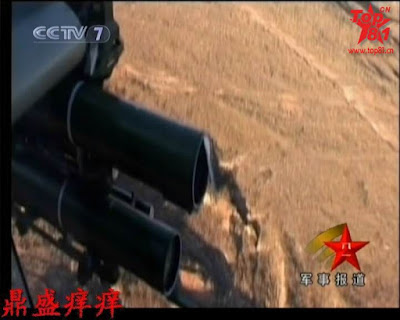Considering the fact that most of the new PLAN submarine operations are now shifting to the South China Sea, centering around Sanya naval base, this DSRV units is long overdue.
Three Jins SSBN and one Shang SSN at Sanya naval base
PLA Navy sets up another marine rescue squadron (DSRV)
Source
China Military Online
Editor
Huang Panyue
Time
2017-10-20
By Guo Yuandan
BEIJING, Oct. 20 (ChinaMil) -- The South China Sea Fleet under the Chinese People's Liberation Army (PLA) Navy set up a new marine rescue squadron, which is expected to be a very important step for improving the PLA Navy's all-domain combat capability, an expert said.
The PLA Daily, the official newspaper of the Chinese PLA, said in a report on Oct. 19 that the squadron is a new unit set up in China's recent military reform. Now the Chinese PLA Navy has two marine rescue squadron.
Previously, the North China Sea Fleet's marine rescue squadron was the only unit of its kind in the Chinese PLA Navy, and it was responsible for all submarine rescue operations across all the PLA's naval jurisdictions.
As the name suggests, one of the main duties of the South China Sea Fleet's marine rescue squadron will deploy rescue ships, life-saving equipment and divers to save lives, resolve submarine-related problems and respond to emergencies, so as to minimize losses in submarine accidents.
Moreover, the marine rescue squadron is also responsible for fast search and emergent rescue tasks in coastal waters, high seas and even continental waters.
As the PLA Navy's mission area is expanding and going farther distances, one marine rescue squadron cannot ensure the timeliness and success rate of the rescue, especially in the South China sea.
An anonymous military expert said on Oct. 19 that the South China Sea Fleet of the Chinese PLA Navy has vast areas under its jurisdiction and convenient access to both the West Pacific Ocean and the Indian Ocean. Therefore, it is of special significance for the Chinese PLA Navy to carry out near-sea defense and far-sea escort and improve its all-domain combat capability.
According to foreign media reports, China's most advanced nuclear submarines are deployed in the South China Sea. In the light of the principle of nearby and fast assistance, it is absolutely necessary and reasonable to form a marine rescue squadron in the South China Sea.
The squadron is just like the "underwater ambulance" for submarine rescue. It will shorten the time and raise the efficiency of life saving, and effectively improve the success rate of life saving.
Also, setting up such a marine rescue squadron is extremely meaningful for supporting the Chinese PLA Navy to go farther and deeper in the world.
Vacation in Sanya
When the PLAN submarine base in Sanya Hainan was revealed to the public
two years ago, it caused a stir within the PLA watching community
(here).
Simultaneously, Sanya is developing into one of the nicest vacation
spots in the world. Why swim with dolphins when you can swim with Han
class nuclear submarines?
The decommissioned LSM 978
(here)








































































